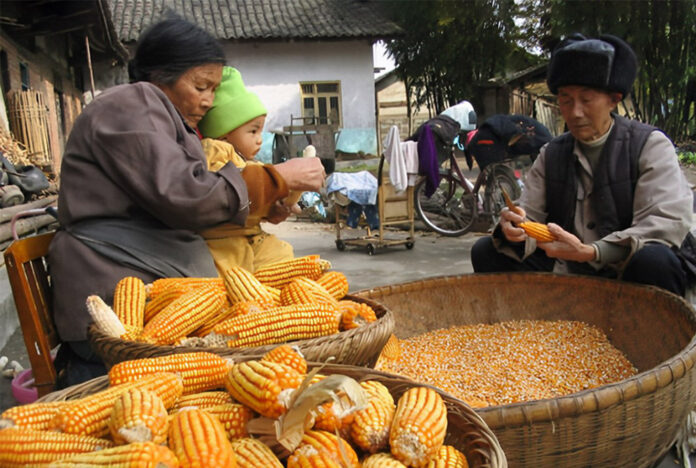
(TibetanReview.net, Dec28’21) – The People’s Republic of China, which is home to less than 20% of the world’s population, has managed to stockpile more than half of the globe’s maize and other grains, leading to steep price increases across the planet and dropping more countries into famine, reported asia.nikkei.com Dec 23. And in remarks published on Dec 26, Chinese President Xi Jinping emphasized that ensuring the supply of primary products was a major strategic issue and the Chinese people must have firm control over their own food supply, reported China’s official chinadaily.com.cn Dec 27.
Hunger and famine have toppled regimes throughout China’s history and the Communist Party of China obviously does not want to see this repeated in its time.
Xi was stated to have made his remarks at a meeting of the Standing Committee of the Political Bureau of the CPC Central Committee, as the two-day Central Rural Work Conference, which outlined China’s rural development plans for the coming year, concluded in Beijing.
Stressing the strategic importance of food security, given its bearing on the party’s hold on power, he has called it important to move forward the alignment between poverty reduction efforts and rural vitalization to prevent a large-scale reemergence of poverty.
The conference, which brought together ministerial officials and officials from different provincial areas, was stated to have adopted a decision to develop 6.66 million hectares of high-quality farmland, push forward breakthroughs in key agricultural technologies, and improve the research, development and application of agricultural machinery.
As of now, food grain deficient China, where corrupt land deals have deprived many farmers of their agricultural land and made hordes of urban Chinese millionaires, is flush with money and using it to corner the world’s grain supplies, leaving very little for the rest of the world’s poor and hungry.
China is maintaining its food stockpiles at a “historically high level,” the asia.nikkei.com report cited Qin Yuyun, head of grain reserves at China’s National Food and Strategic Reserves Administration, as telling told reporters in November. “Our wheat stockpiles can meet demand for one and a half years. There is no problem whatsoever about the supply of food.”
The report cited data from the US Department of Agriculture as saying China was expected to have 69% of the globe’s maize reserves in the first half of crop year 2022, 60% of its rice and 51% of its wheat.
The projections represent increases of around 20 percentage points over the past 10 years, and the data clearly shows that China continues to hoard grain, the report noted.
The report cited the General Administration of Customs of China as saying the country had spent $98.1 billion importing food (beverages are not included) in 2020, up 4.6 times from a decade earlier.
It noted that in the Jan-Sep period of 2021, China had imported more food than it had since at least 2016, which is as far back as comparable data goes.
The report added that over the past five years, China’s soybean, maize and wheat imports soared two- to twelve-fold on aggressive purchases from the US, Brazil and other supplier nations. Imports of beef, pork, dairy and fruit were stated to have jumped two- to five-fold.
China’s production of wheat and other provisions as well as the amount of land used for agriculture were stated to have plateaued in 2015. “Agricultural productivity in China is low due to the dispersion of farmland and soil contamination,” Goro Takahashi, a professor emeritus at Aichi University and expert on Chinese agriculture, has said. “The amount of agricultural production will continue to stall as farmers migrate to urban areas.”
The report noted: “Throughout history, food shortages had triggered popular unrest. They served as a contributing factor to uprisings that toppled Chinese dynasties. And the world’s second largest economy now faces food uncertainties due to factors such as its deteriorating relations with the US and Australia, which could drastically alter the import environment. In fact, this could be what is prodding China to boost its calorie reserves.”
Meanwhile, the report cited the UN as saying that the number of people living in famine-struck regions had topped 700 million in 2020, an increase of more than 100 million from five years earlier.





